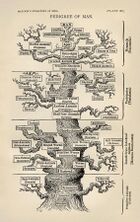Biology:Resource
In biology and ecology, a resource is a substance or object in the environment required by an organism for normal growth, maintenance, and reproduction. Resources box can be consumed by one organism and, as a result, become unavailable to another organism.[1][2][3] For plants key resources are light, nutrients, water, and place to grow. For animals key resources are food, water, and territory.
Key resources for plants
Terrestrial plants require particular resources for photosynthesis and to complete their life cycle of germination, growth, reproduction, and dispersal:[4][5]
Key resources for animals
Animals require particular resources for metabolism and to complete their life cycle of gestation, birth, growth, and reproduction:[6]
Resources and ecological processes
Resource availability plays a central role in ecological processes:
See also
- Abiotic component
- Biotic component
- Community ecology
- Ecology
- Population ecology
- Plant ecology
- size-asymmetric competition
References
- ↑ Miller, G.; Spoolman, Scott (2012). Living in the Environment Principles, Connections, and Solutions. Brooks/Cole. ISBN 978-0-538-73534-6.
- ↑ Ricklefs, R.E. 2005. The Economy of Nature, 6th edition. WH Freeman, USA.
- ↑ Chapin, F.S. III, H.A. Mooney, M.C. Chapin, and P. Matson. 2011. Principles of terrestrial ecosystem ecology. Springer, New York.
- ↑ Barbour, M.G. J.H. Burk, W.D. Pitts and F.S. Gilliam. 1998. Terrestrial Plant Ecology, 3rd ed. Benjamin Cummings, San Francisco, CA.
- ↑ Craine, J.M. 2009. Resource strategies in wild plants. Princeton University Press, Princeton.
- ↑ Smith, T.M., and R.L. Smith. 2008. Elements of ecology, 7th ed. Benjamin Cummings, San Francisco, CA.


